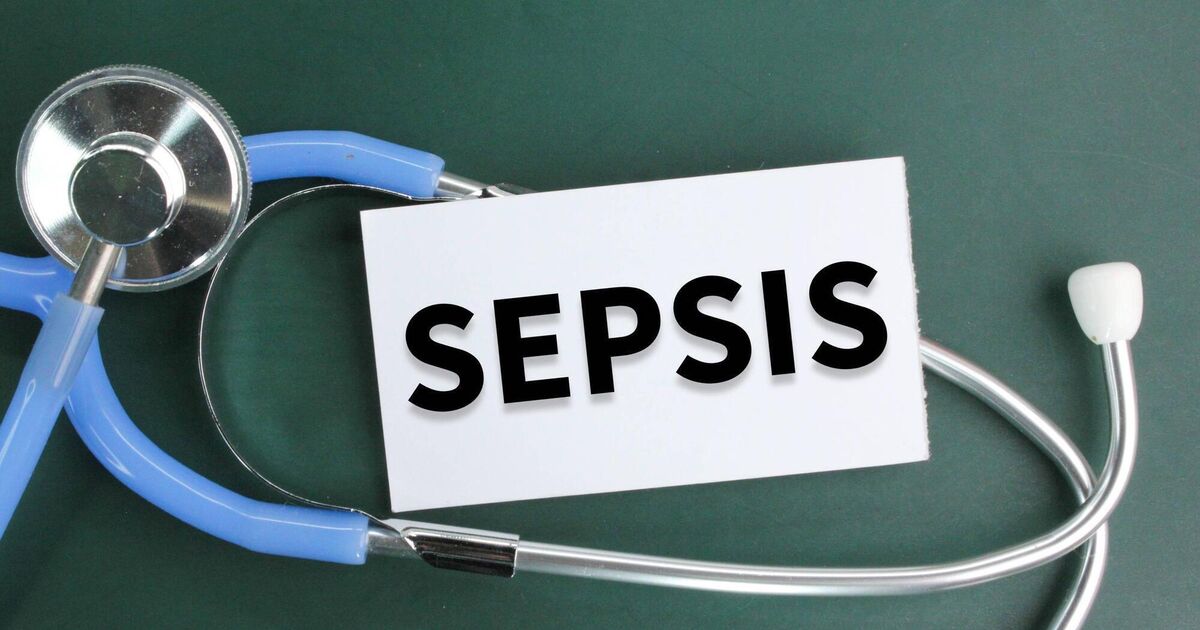SUDDEN confusion, racing heart rate, drowsiness, shortness of breath, mottled skin, and fever could be symptoms of sepsis, a life-threatening form of blood poisoning.
Sepsis can arise from acute bacterial infections (such as meningitis), viruses (like covid and seasonal flu), and sometimes infections subtly contracted through a minor cut, graze, or picked spot.
Sepsis kills 3,000 people in Ireland every year and one in five people globally. Raising awareness is the aim of World Sepsis Day on September 13.
Dr Emer Liddy, public health specialist registrar at HSE Dublin and South East, says sepsis occurs when the immune system becomes overwhelmed in response to a bacterial or viral infection, going in to rapid overdrive and attacking the body’s own organs instead of fighting the pathogen.
“Despite initial mild symptoms, people with sepsis can deteriorate very quickly,” Liddy says.
“Sepsis can be triggered by many different pathogens that commonly circulate in the community.”
If detected early, sepsis can be treated. Michael Ramsay, CEO of the Patient Safety Movement Foundation, a US non-profit that campaigns for the reduction of preventable deaths, says that more than 80% of sepsis fatalities could be prevented by quickly spotting the signs and administering treatments, such as intravenous antibiotics.
“Timely diagnosis and treatment are essential to saving lives,” says Ramsey. “Mortality from sepsis increases by 8% for every hour that treatment is delayed.”
However, awareness among the public has traditionally remained low. Liddy says a HSE survey of more than 1,000 adults found that only 29% of respondents knew what sepsis was.
In response, Liddy says the HSE is running radio and social media adverts to raise awareness of the key sepsis red flags.
Warning signs in children can be slightly different to adults, including:
- Very fast breathing
- Fits or convulsions
- Rash that doesn’t fade when a glass is rolled over it
- Being unusually sleepy and difficult to awaken
- Unusually cold to the touch
- Skin that is mottled, pale, or blue
- Not passing urine for more than 12 hours.
Missed symptoms
But sepsis is also often missed by health professionals. Last year, a major study assessing the care given to 221,429 patients in Germany found that paramedics and emergency room doctors often failed to pick up on crucial early warning signs of sepsis.
James Corcoran, deputy chairperson of the Irish Sepsis Foundation (ISF), says that sepsis can initially be missed, particularly in older people, pregnant and postpartum women, and those with weakened immune systems and chronic illnesses, because some of the symptoms can be conflated with other conditions.
Communication issues within hospitals can also mean that life-threatening situations are not escalated swiftly enough. “Out-of-hours, limited staffing and variation in escalation practices mean some patients are not treated as urgently as they should be,” says Corcoran. “Paper notes, delayed blood tests, and gaps during handover also contribute.”
To address these shortfalls, the ISF is calling for the Government to implement a national sepsis action plan to improve delivery of the three principles of sepsis care: Early screening, rapid escalation when concerning cases are identified, and treatment within the first hour.
The plan would implement standardised sepsis screening in hospital electronic records, see automatic sepsis alerts embedded within ambulance service systems, as well as provide mandatory sepsis training for all healthcare staff, including simulation exercises to ensure that medical professionals are confident in recognising and treating sepsis.
The charity also wants dedicated maternity and paediatric sepsis care pathways, as pregnant women and children are especially vulnerable and require specific care.
“These steps are achievable now and will save lives,” says Corcoran.
“Our plan would also publish real-time national data, so hospitals can benchmark and improve government-backed public awareness campaigns each September with visible ministerial support, establish structured follow-up care for sepsis survivors, and pilot programmes for rapid diagnostic technologies in Irish hospitals.”
No definitive test
One of the biggest challenges with sepsis has long been the fact that no single test can easily tell a doctor whether a patient has sepsis or not.
The NEWS2 sepsis screening tool, viewed as the best clinical option currently available, can still only correctly predict 72% of cases, while Liddy points out that the closest thing to a gold standard test is blood cultures, which are still relatively inaccurate. They report negative results in about half of patients with septic shock, the most severe form of sepsis.
“There is a lot of international research in the development of sepsis diagnostics, but, to date, the results haven’t been accurate enough for use in clinical practice,” says Liddy.
However, the ISF remains optimistic that better diagnostics will emerge, which will help clinicians quickly identify the pathogen circulating in the bloodstream, enabling them to target treatment more precisely.
“One promising project in Ireland is Novus Diagnostics’ SepTec, a rapid test that can detect bloodstream infections and classify the type of pathogen in as little as 15 minutes,” says Corcoran.
“This has the potential to transform how quickly the right treatment is given.”
More targeted diagnostics are seen as vital going forward, with antibiotic resistance already posing an increasing problem in treating sepsis cases. Liddy says that research is also under way in to the experimental use of immune modulatory drugs — commonly used in cancer care — in sepsis patients to see whether they can help regulate the immune system back to normal, and save lives.
For now, the best way to reduce our risk of becoming seriously ill or dying from sepsis is to be aware of the warning signs and take sensible preventative measures.
“Ensuring that you’re up to date with scheduled vaccinations, maintaining good personal hygiene, following medical advice for the management of chronic illnesses, seeking prompt medical attention for any suspected infection, and taking antibiotics when prescribed are important measures that we can all take to reduce the risk of developing sepsis,” she says.
